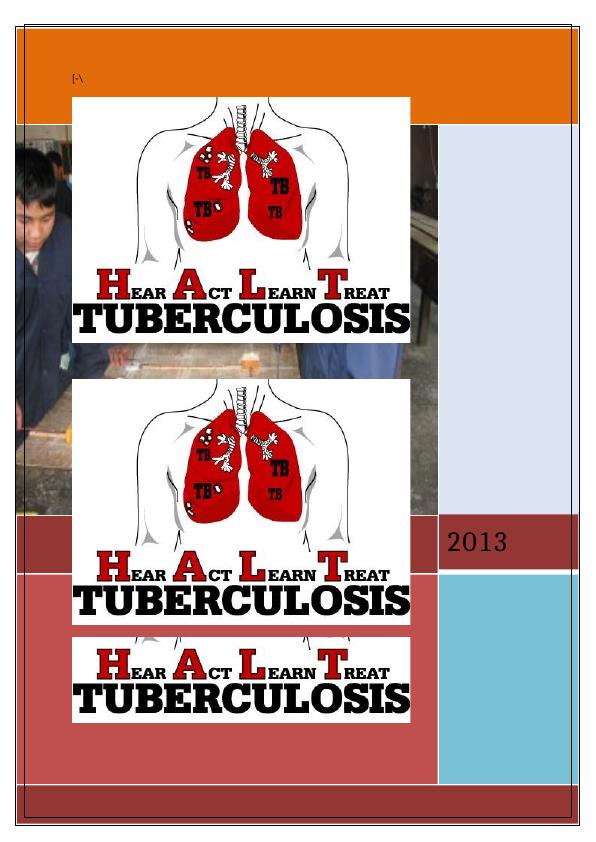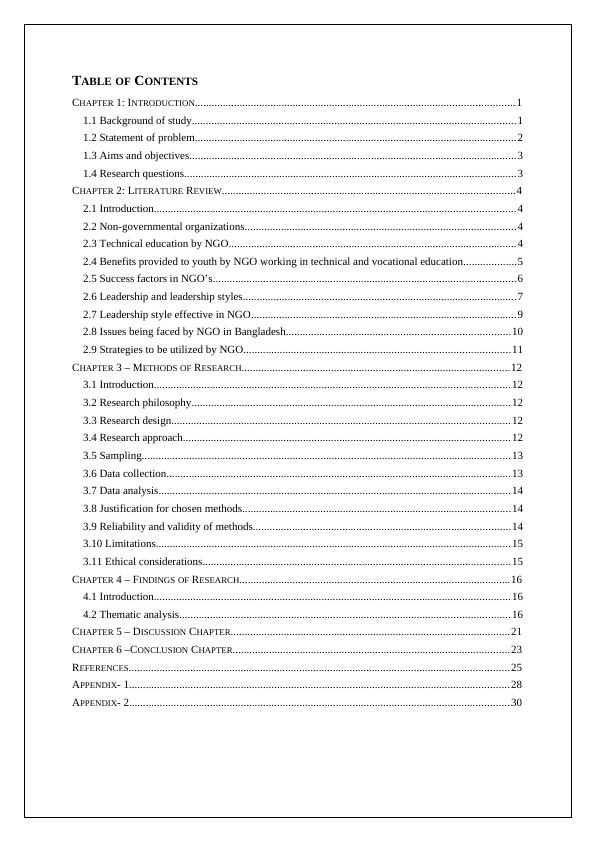Non-governmental Organizations (NGOs) : Assignment
30 Pages8724 Words281 Views
Added on 2019-12-03
Non-governmental Organizations (NGOs) : Assignment
Added on 2019-12-03
ShareRelated Documents
2013[-\

Table of Contents

ACKNOWLEDGEMENTI am extremely indebted to my mentor, family and friends as they provided me therequired support through the completion of this dissertation by my In this regard, I want tofirst thank my mentor, for giving me the opportunity to start the dissertation and the neededguidance at each step of the dissertation. Furthermore, I also want to thank my team membersfor helping me in the data collection and analysis for research in order to achieve relevantresults for the dissertation.

ABSTRACTNon government organizations have played an essential role in the process of bringingsocial change in the economically backwards regions all over the world, Bangladesh inparticular. They have tried to transform lives of people via variety of support programs thatare carried out in areas related to basic health care, education, helping children, old age etc.However, the NGO’s have their own set of issues which is acting as a drawback for itseffective working. The given report tries to present a best strategy that can be applied by NGOs workingin the area of technical education. The report starts with an overview abut basic working andhow the NGO’s have provided benefits to youth by working in technical and vocationaleducation. It also represents a wide range of success factors that are a key to its successfulworking. This is followed by dealing with the issues related to absence of leadership andmanagement skills that has led to a huge turnover of human resources. In this respect the best strategy is to follow an approach of participatory managementapproach which inculcates the staff members in the process of decision making so as to makethem feel that they are worthy for an organization. This should be followed by a collaborativepartnership between government and Non Governmental Organizations to cater to the processof social change that can act as a ray of hope towards a better life.

TABLEOF CONTENTSCHAPTER 1: INTRODUCTION..................................................................................................................11.1 Background of study....................................................................................................................11.2 Statement of problem...................................................................................................................21.3 Aims and objectives.....................................................................................................................31.4 Research questions.......................................................................................................................3CHAPTER 2: LITERATURE REVIEW.........................................................................................................42.1 Introduction.................................................................................................................................42.2 Non-governmental organizations.................................................................................................42.3 Technical education by NGO.......................................................................................................42.4 Benefits provided to youth by NGO working in technical and vocational education...................52.5 Success factors in NGO’s............................................................................................................62.6 Leadership and leadership styles..................................................................................................72.7 Leadership style effective in NGO...............................................................................................92.8 Issues being faced by NGO in Bangladesh................................................................................102.9 Strategies to be utilized by NGO...............................................................................................11CHAPTER 3 – METHODSOF RESEARCH................................................................................................123.1 Introduction...............................................................................................................................123.2 Research philosophy..................................................................................................................123.3 Research design.........................................................................................................................123.4 Research approach.....................................................................................................................123.5 Sampling....................................................................................................................................133.6 Data collection...........................................................................................................................133.7 Data analysis..............................................................................................................................143.8 Justification for chosen methods................................................................................................143.9 Reliability and validity of methods............................................................................................143.10 Limitations...............................................................................................................................153.11 Ethical considerations..............................................................................................................15CHAPTER 4 – FINDINGSOF RESEARCH.................................................................................................164.1 Introduction...............................................................................................................................164.2 Thematic analysis......................................................................................................................16CHAPTER 5 – DISCUSSION CHAPTER....................................................................................................21CHAPTER 6 –CONCLUSION CHAPTER...................................................................................................23REFERENCES........................................................................................................................................25APPENDIX- 1........................................................................................................................................28APPENDIX- 2........................................................................................................................................30

End of preview
Want to access all the pages? Upload your documents or become a member.
Related Documents
Mitigating Strategies within Operations Transformation: A Case Study of Royal Mail UKlg...
|74
|18737
|464
Dissertation on Impact of Increasing Staff Turnover on Company's Performancelg...
|43
|14104
|52
Top-Up: Copying No Part of My Courseworklg...
|39
|11808
|439
Evaluate the level of educational and psychological support for children with Autismlg...
|39
|11713
|492
How Banks Can Implement Business Strategies in Light of Globalisation to Improve Connectivity with Clients - A Case of Barclays PLClg...
|38
|10843
|33
Business Performance of Valeant Group | Dissertationlg...
|33
|10115
|49

